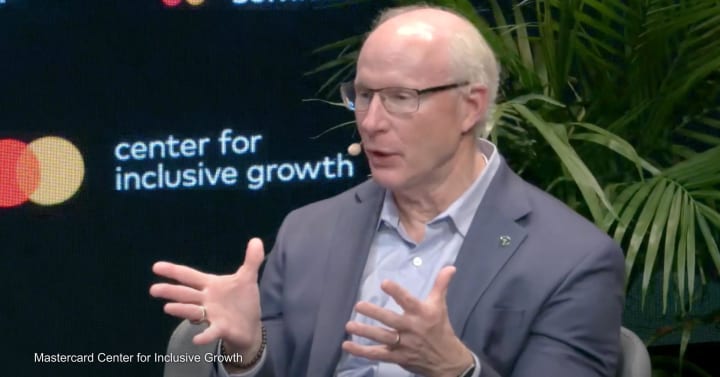Why supporting small, rural businesses is key to local economic growth – Devex

Supporting Small and Medium-Sized Enterprises for Sustainable Development
Introduction
Small and medium-sized enterprises (SMEs) are vital to global economies, constituting 90% of businesses worldwide and providing over 50% of employment. In the United States, SMEs represent 99% of all businesses and generate two out of every three new jobs. However, these enterprises, particularly in rural areas, face significant challenges in accessing financial resources, establishing operations, and scaling effectively.
Challenges Faced by SMEs in Rural and Underserved Areas
- Limited access to capital and financial support
- Insufficient entrepreneurial networks and expertise
- Lack of high-speed internet connectivity, affecting nearly 25% of rural Americans
- Dependence on external companies rather than fostering local entrepreneurship
Emphasizing Sustainable Development Goals (SDGs)
The empowerment of SMEs aligns closely with several United Nations Sustainable Development Goals, including:
- SDG 8: Decent Work and Economic Growth – Supporting SMEs promotes sustained economic growth and productive employment.
- SDG 9: Industry, Innovation, and Infrastructure – Enhancing entrepreneurial ecosystems fosters innovation and resilient infrastructure.
- SDG 10: Reduced Inequalities – Providing equitable access to resources for rural and underserved communities reduces economic disparities.
- SDG 17: Partnerships for the Goals – Collaboration among governments, local organizations, and investors strengthens inclusive economic development.
Strategies for Supporting SMEs and Entrepreneurship
Local Entrepreneurial Support Systems
Developing entrepreneurial support organizations (ESOs) can provide mentorship, networking, and training opportunities essential for business growth. These organizations may be managed by chambers of commerce, government entities, or business groups.
Access to Risk Capital
- Encouraging local investor groups and high-net-worth individuals to invest in community businesses
- Connecting rural entrepreneurs with metropolitan venture capital and angel networks
- Utilizing federal programs such as the State Small Business Credit Initiative to facilitate early access to financing
Entrepreneurial Training and Early-Stage Support
Partnerships with organizations like Builders + Backers provide early-stage entrepreneurs with training programs such as the Idea Accelerator, which includes a $5,000 grant to test business ideas. Over 1,000 participants, many from rural areas, have benefited from this initiative, leading to job creation and innovation in diverse sectors.
Lessons for Global Application
Key lessons for integrating SMEs into the global economy include:
- Local leadership must prioritize supporting entrepreneurs with tools, training, and mentorship.
- Minimizing bureaucratic barriers to business registration and operation.
- Developing infrastructure, especially high-speed internet, to enable market access and scalability.
Call to Action: Enhancing Rural Small Businesses in the Digital Economy
Access to high-speed internet is critical for rural SMEs to participate fully in the modern economy. Additionally, communities should focus on becoming “investment ready” by understanding investor expectations and creating conducive environments for business financing and growth.
Ongoing Initiatives and Partnerships
Heartland Forward is launching a Center for Investment Readiness to assist communities in attracting and supporting investment. Furthermore, the Mastercard Center for Inclusive Growth supports Heartland Forward through the development of the Pulse of the Heartland platform, which provides real-time data and analysis to inform policymakers and community leaders across 20 states.
1. Sustainable Development Goals (SDGs) Addressed or Connected
- SDG 8: Decent Work and Economic Growth
- The article focuses on small and medium-sized enterprises (SMEs) as key drivers of economic growth and job creation, especially in rural areas.
- SDG 9: Industry, Innovation, and Infrastructure
- Emphasis on entrepreneurial ecosystems, innovation, and access to infrastructure such as high-speed internet.
- SDG 10: Reduced Inequalities
- Addressing challenges faced by rural and undercapitalized communities to integrate into the economy.
- SDG 17: Partnerships for the Goals
- Collaboration between government, private sector, and organizations like Heartland Forward and Mastercard Center for Inclusive Growth.
2. Specific Targets Under Those SDGs Identified
- SDG 8 Targets
- 8.3: Promote development-oriented policies that support productive activities, decent job creation, entrepreneurship, creativity and innovation.
- 8.5: Achieve full and productive employment and decent work for all, including young people and persons with disabilities.
- SDG 9 Targets
- 9.1: Develop quality, reliable, sustainable and resilient infrastructure, including regional and transborder infrastructure.
- 9.3: Increase the access of small-scale industrial and other enterprises to financial services, including affordable credit.
- SDG 10 Targets
- 10.2: Empower and promote the social, economic and political inclusion of all, irrespective of age, sex, disability, race, ethnicity, origin, religion or economic or other status.
- SDG 17 Targets
- 17.16: Enhance the global partnership for sustainable development, complemented by multi-stakeholder partnerships.
3. Indicators Mentioned or Implied to Measure Progress
- Employment and Business Statistics
- Percentage of small businesses in the economy (e.g., 99% of businesses in the US are small businesses).
- Number of new jobs created by small businesses (two out of every three new jobs in the US).
- Access to Financial Services
- Availability and use of credit and venture capital by small businesses, especially in rural areas.
- Participation in programs like the State Small Business Credit Initiative.
- Infrastructure Access
- Percentage of rural population with access to high-speed internet (noted as nearly 25% lacking access in rural America).
- Entrepreneurial Support and Training
- Number of entrepreneurs completing training programs (e.g., over 1,000 “builders” in the Idea Accelerator program).
- Number of businesses started and scaled through support programs.
- Investment Readiness
- Measures of communities’ ability to attract investment, such as the establishment of Centers for Investment Readiness.
4. Table of SDGs, Targets, and Indicators
| SDGs | Targets | Indicators |
|---|---|---|
| SDG 8: Decent Work and Economic Growth |
|
|
| SDG 9: Industry, Innovation, and Infrastructure |
|
|
| SDG 10: Reduced Inequalities |
|
|
| SDG 17: Partnerships for the Goals |
|
|
Source: devex.com








